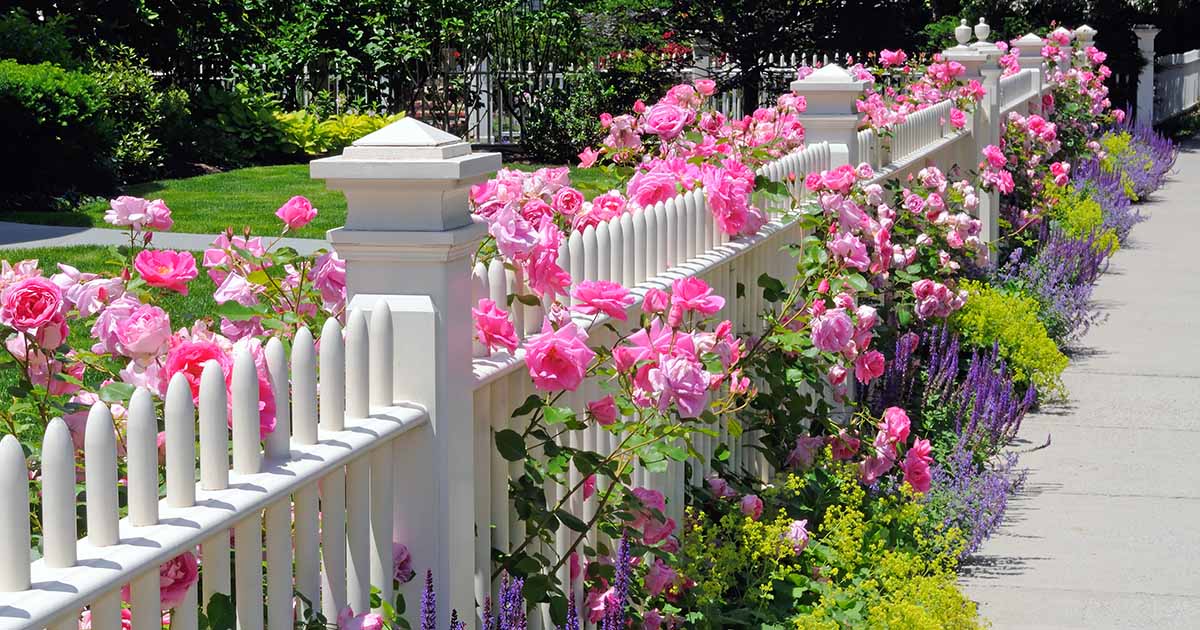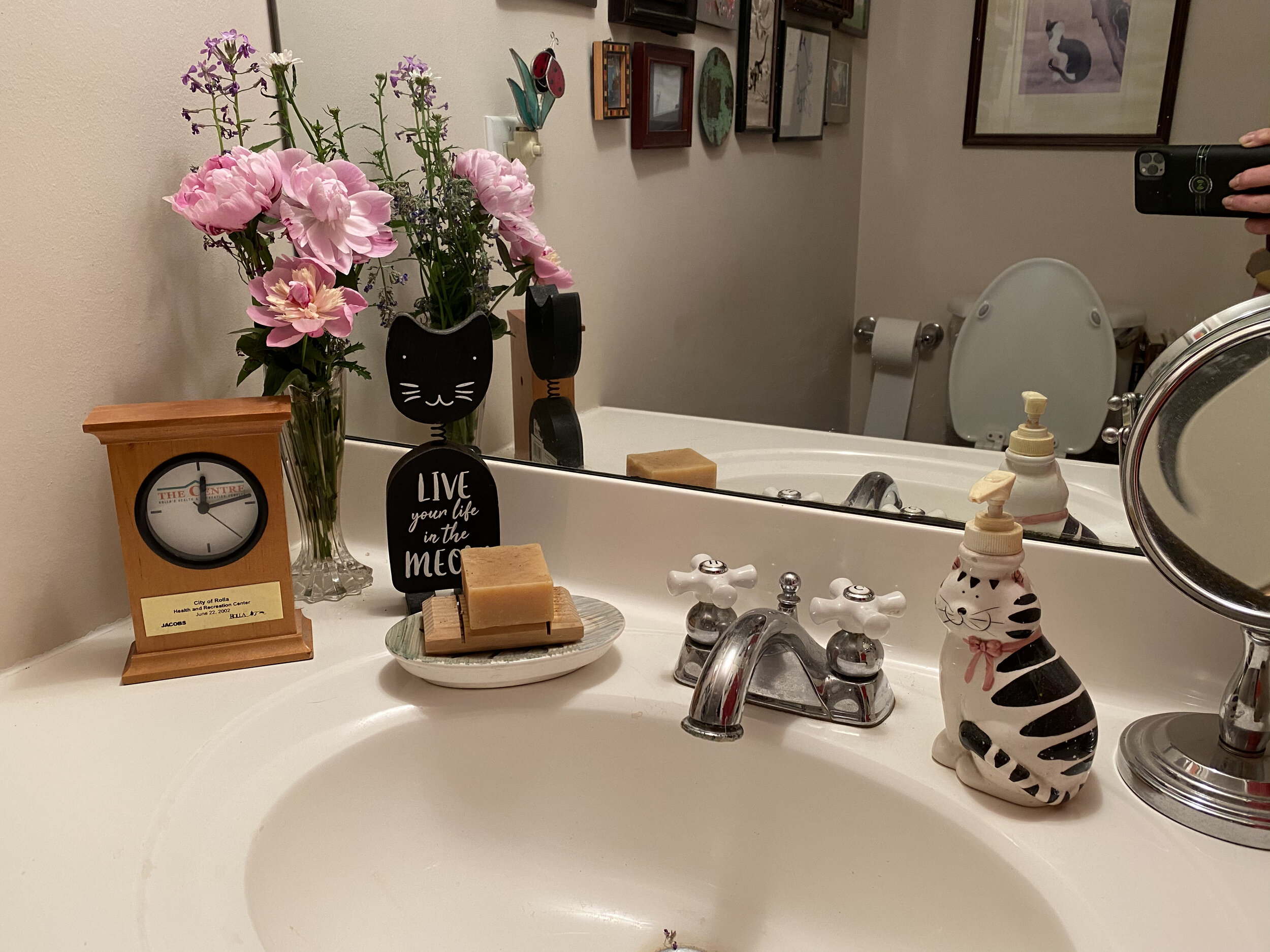What is the best side of the house to plant roses? A Comprehensive Guide for Gardeners

Choosing the right side of the house to plant roses can significantly impact their growth and blooming potential. With various factors to consider, such as sunlight exposure, wind protection, and soil conditions, gardeners need to be strategic in their planning. This comprehensive guide will explore the ideal conditions for growing roses, including the best orientations for sunlight, tips on soil preparation, and ways to protect your plants from harsh weather. Whether you're a seasoned gardener or just starting, understanding these elements will help you cultivate beautiful, thriving rose bushes in your garden.
What is the Best Side of the House to Plant Roses?
When deciding on the best side of the house to plant roses, consider factors such as sunlight, wind protection, and drainage. Typically, the south or west sides of a house receive the most sunlight, which is essential for roses to thrive, as they generally need at least six hours of direct sunlight daily. Additionally, these sides often provide some protection from harsh winds, which can damage delicate blooms. Avoid planting on the north side where there is less sunlight and cooler temperatures, as this may lead to poor growth and susceptibility to diseases. Location also affects moisture levels; ensure that your chosen side has good drainage to prevent waterlogged roots, which can be detrimental to rose health.
Sunlight Requirements for Roses
Roses require ample sunlight to flourish, with most varieties needing at least six hours of direct sunlight each day. When selecting a side of the house for planting, choose locations that receive full sun, such as the south and west sides. Insufficient sunlight can result in weak growth, reduced blooming, and increased vulnerability to pests and diseases. Monitoring the sunlight exposure throughout the seasons will also help in ensuring that your roses receive the right amount of light for optimal development.
Wind Protection
Planting roses in a location that offers adequate wind protection is crucial to their health and longevity. Wind can cause physical damage to the plants, leading to broken stems and petals. Additionally, harsh winds can dry out the plants, creating stress that hinders their growth. The south and west sides of a house typically offer a buffer against strong winds, making them preferable spots for planting. If these sides are not available, consider using trellises or other structures to provide additional protection.
Soil Drainage
Good drainage is essential when planting roses, as they are susceptible to root rot when sitting in waterlogged soil. Before planting, assess the soil composition on the chosen side of the house. The south and west sides often have better soil drainage due to sun exposure, which helps prevent excessive moisture accumulation. If drainage is poor, consider creating raised beds or amending the soil with organic matter like compost to improve its texture and drainage properties.
Microclimate Considerations
The side of the house can create unique microclimates that influence the growth of roses. The south side usually retains more heat and tends to be more sheltered from cold winds, making it ideal for many rose varieties. Conversely, the north side is typically cooler and may not provide the warm conditions necessary for roses to prosper. Understanding the microclimate of your planting area can help you determine the best location that will support vibrant and healthy rose growth.
Choosing the Right Rose Varieties
Selecting the appropriate rose varieties based on the location is crucial. Some varieties thrive better in sunlight, while others are more shade-tolerant. For the south and west sides, consider heat-loving varieties like Knock Out or David Austin roses. For areas with limited sunlight, opt for shade-tolerant varieties such as Virginia Rose or Climbing Roses. Ensure you research the specific needs and adaptability of the varieties that you choose to ensure successful growth.
| Location | Sunlight | Wind Protection | Soil Drainage |
|---|---|---|---|
| South Side | 6+ hours | Good | Excellent |
| West Side | 6+ hours | Moderate | Good |
| North Side | Less than 6 hours | Poor | Poor |
| East Side | 4-6 hours | Moderate | Good |
What side of the house should you plant roses on?

To determine the best side of the house to plant roses, it's essential to consider sunlight, wind protection, and drainage. Generally, roses thrive in full sunlight, which means they require at least 6 to 8 hours of direct sunlight per day. Here’s a closer look at the best sides of the house for planting roses.
Ideal Sunlight Exposure
Roses flourish when they receive ample sunlight, making the south and west sides of a house the most suitable locations.
- The south side of the house gets the most sunlight throughout the day, ensuring the plants remain warm and vibrant.
- The west side receives a significant amount of afternoon sun, which is crucial for rose plants during the summer months.
- The east side can also be appropriate if it receives enough morning sun, but may not be ideal for heat-loving varieties.
Protection from Wind
Wind can be detrimental to roses, as it can lead to dehydration and physical damage.
- Locate roses on the south or west side, where they can be sheltered from cold winds that usually come from the north.
- Using natural barriers such as trees, shrubs, or fences can help protect roses from harsh wind exposure.
- Consider planting taller plants or structures nearby, ensuring they shield your roses while still allowing ample sunlight.
Soil Drainage Considerations
Good drainage is vital for healthy rose plants as they do not tolerate waterlogged soil well.
- Choose planting areas on slightly elevated ground, often found on the south side, where water tends to drain away more efficiently.
- Consider incorporating drainage-friendly amendments such as compost to improve soil structure.
- Avoid depressions or low-lying areas, particularly on the north side, where water might accumulate after heavy rains.
Climate Influence
The climate of your region also impacts where to plant roses.
See also:
- In hot climates, the north or east sides of the house can provide some relief from the intense afternoon sun, protecting plants from scorching.
- In colder regions, the south and west sides remain warm for longer durations, extending the growing season and reducing frost risk.
- Assessing local weather patterns will help you choose the best site for your roses, taking into account humidity and temperature extremes.
Types of Roses and Their Requirements
Different varieties of roses have unique needs regarding sunlight and care.
- Hybrid tea roses typically thrive in full sun and should be planted on the south or west sides of a house.
- Climbing roses can be successfully trained on walls, best placed in sunny spots to reach their full potential.
- For shade-loving roses, consider varieties like Austin roses that can tolerate less sunlight but still prefer morning light.
Where is the best place to plant roses around the house?

The best place to plant roses around the house depends on several factors, including sunlight, drainage, and protection from harsh weather. Here are key considerations for choosing the right spots for your roses:
Sunlight Requirements
Roses thrive best in areas that receive a minimum of six hours of direct sunlight each day. This is crucial for their growth and blooming process. If planted in shaded areas, roses may become leggy and have fewer flowers.
- Choose locations that face south or west for maximum sun exposure.
- Avoid planting roses in areas surrounded by tall trees that can block sunlight.
- Consider using reflective surfaces, like walls or fences, to enhance sun exposure.
Soil Health and Drainage
Roses prefer well-drained soil that is rich in organic matter. Poor drainage can lead to root rot and other diseases. Conducting a soil test can help determine the pH and nutrient levels.
- Ensure the planting site has good drainage; avoid low spots where water tends to collect.
- Amend the soil with compost or well-rotted manure to enhance its fertility.
- Consider raised beds if your soil is heavy clay or prone to waterlogging.
Wind Protection
Roses can be sensitive to strong winds, which can damage their delicate blooms and foliage. Protecting roses from harsh winds is essential for their overall health.
- Plant roses near a fence or wall to act as a windbreak.
- Use larger shrubs or hedges nearby to provide additional shelter from gusts.
- Avoid planting roses in open areas where they are exposed to prevailing winds.
Accessibility for Care
Consider the accessibility of the planting site for ongoing care activities, such as watering, pruning, and harvesting blooms.
- Plant roses near walkways or patios for easy access.
- Avoid crowded areas where roses might interfere with other plants or structures.
- Ensure enough space for proper air circulation and maintenance activities.
Aesthetic Planning
The visual placement of roses can enhance the overall aesthetic appeal of your home and garden. Thoughtful design can turn your rose garden into a stunning focal point.
- Consider planting roses in clusters or beds to create impactful color displays.
- Mix different varieties for contrast in shape, color, and fragrance.
- Incorporate other plants, such as perennials and annuals, for a diverse and vibrant garden look.
Where not to plant roses?
:max_bytes(150000):strip_icc()/GettyImages-2150818868-0e7708cc239247b68bf29c5b5f55eabe.jpg)
To ensure the success of your rose plants, it's crucial to know where not to plant them. There are certain conditions and locations that can hinder their growth and flowering, leading to disease and poor health. Here are some key areas to avoid when planting roses.
1. Areas with Poor Drainage
Planting roses in locations with poor drainage can lead to root rot and other fungal diseases. Roses need well-draining soil to thrive. Puddles or soggy areas can become a breeding ground for pests and diseases.
- Choose locations where water does not pool after heavy rainfall.
- Consider amending soil with organic matter or gravel to improve drainage.
- Check if the area tends to become waterlogged in spring or after watering.
2. Highly Shaded Locations
Roses thrive best in full sunlight, ideally receiving 6-8 hours of direct sunlight daily. Shade can inhibit growth and flowering.
- Avoid planting roses under trees or large shrubs that block sunlight.
- Identify areas where shadows are cast by buildings or fences during peak sunlight hours.
- Ensure the planting site receives sunlight for the majority of the day.
3. Areas with Extremely Hot or Dry Conditions
While roses can tolerate some heat, extreme temperatures and lack of hydration can stress plants. Desert-like conditions can lead to wilting and unfavorable growth.
See also:
- Identify regions where temperatures exceed 90°F (32°C) consistently.
- Monitor the humidity levels of the area, aiming for moderate rather than arid conditions.
- Consider planting a few heat-tolerant varieties if you live in a hot climate.
4. Regions Prone to Frost or Harsh Winters
Roses may struggle in areas that experience harsh winters and late frosts, which can disrupt growing cycles.
- Research your hardiness zone to identify if your area can support the rose varieties you want.
- Opt for winter-hardy rose varieties if you live in colder climates.
- Steer clear of locations that are exposed and prone to frost pockets.
5. In Proximity to Trees and Shrubs
Planting roses too close to trees or large shrubs can lead to competition for resources. Root competition can affect water and nutrient absorption.
- Maintain a distance of at least 2-3 feet from large-rooting plants.
- Consider the canopy of nearby trees, as it can limit sunlight availability.
- Avoid areas where tree roots may encroach upon the rose roots.
Where should I put roses in my house?

Roses are a beautiful addition to any home, and placing them in the right spots can enhance their beauty while promoting their healthy growth. Here are several ideal locations for showcasing roses within your house.
Indoor Placement of Roses
Placing roses indoors can brighten up your space and create a delightful ambience. When choosing indoor locations for roses, consider the following options:
- Near Windows: Select spots close to windows where they can receive bright, indirect sunlight.
- Avoid Drafts: Make sure to place them away from drafty areas, such as open doors or air conditioning vents.
- Humidity Levels: Consider using a humidifier or placing roses in naturally humid areas, like bathrooms, to keep them healthy.
Outdoor Areas with Natural Light
For outdoor roses, selecting the right spot is crucial for their growth. The best areas typically include:
- Garden Beds: Planting roses in garden beds that receive at least six hours of direct sunlight daily.
- Patios or Decks: Use larger containers to display roses on patios or decks where they can thrive in sunlight.
- Rear Yards: A quiet, sunny space in the rear yard can protect roses from harsh wind and intense sunlight.
Complementing Home Decor
Integrating roses into your home decor can elevate your aesthetic appeal. Here are some ideas to consider:
- Vases: Fresh-cut roses can be displayed in decorative vases on dining tables or side tables.
- Arrangements: Create stunning floral arrangements with roses and other flowers to enhance interior design.
- Wall Decor: Hang framed botanical prints of roses to bring a touch of floral beauty to your walls.
Seasonal Considerations
Seasonal changes affect where you should place roses at home. Be mindful of these aspects:
- Winter Protection: Move potted roses indoors during winter months to protect them from frost.
- Summer Heat: Place roses in shaded areas during extreme summer heat to prevent wilting.
- Spring Bloom: During spring, ensure roses are placed where they can soak up ample sunlight as they bloom.
Health and Maintenance
Maintaining the health of your roses is vital for their longevity and beauty. Consider these tips:
- Watering: Position roses where they can be easily watered without over-saturating the soil.
- Pest Control: Check for signs of pests regularly, making placement decisions based on pest visibility.
- Pruning Access: Ensure that they are accessible for pruning and maintenance without obstruction.
Questions from Our Readers
What is the best side of the house to plant roses?
The best side of the house to plant roses is typically the south or west side. These areas receive the most sunlight, which is crucial for healthy rose growth. Roses thrive in full sun, needing at least 6 hours of direct light daily, so avoid planting them in shaded areas.
Can I plant roses on the north side of the house?
Planting roses on the north side of the house is generally not recommended, as this side usually receives less sunlight throughout the day. Insufficient light can lead to weak plants and poor flowering. If you have no other options, choose shade-tolerant rose varieties.
What factors should I consider when choosing a location for roses?
When selecting a location for roses, consider factors such as sunlight exposure, drainage, and protection from wind. Roses require well-draining soil to prevent root rot, so avoid low-lying areas where water can accumulate. Additionally, ensure the site is sheltered from harsh winds, which can damage the blooms.
How does the soil quality affect where I plant roses?
Soil quality significantly impacts the health of your roses. Loamy, well-drained soil is ideal for roses, as it retains moisture while allowing excess water to escape. Before planting, test the soil pH, aiming for a range of 6.0 to 6.8 for optimal rose growth.
See also:

If you want to read more articles like What is the best side of the house to plant roses? A Comprehensive Guide for Gardeners, we recommend you check out our Roses category.
Leave a Reply